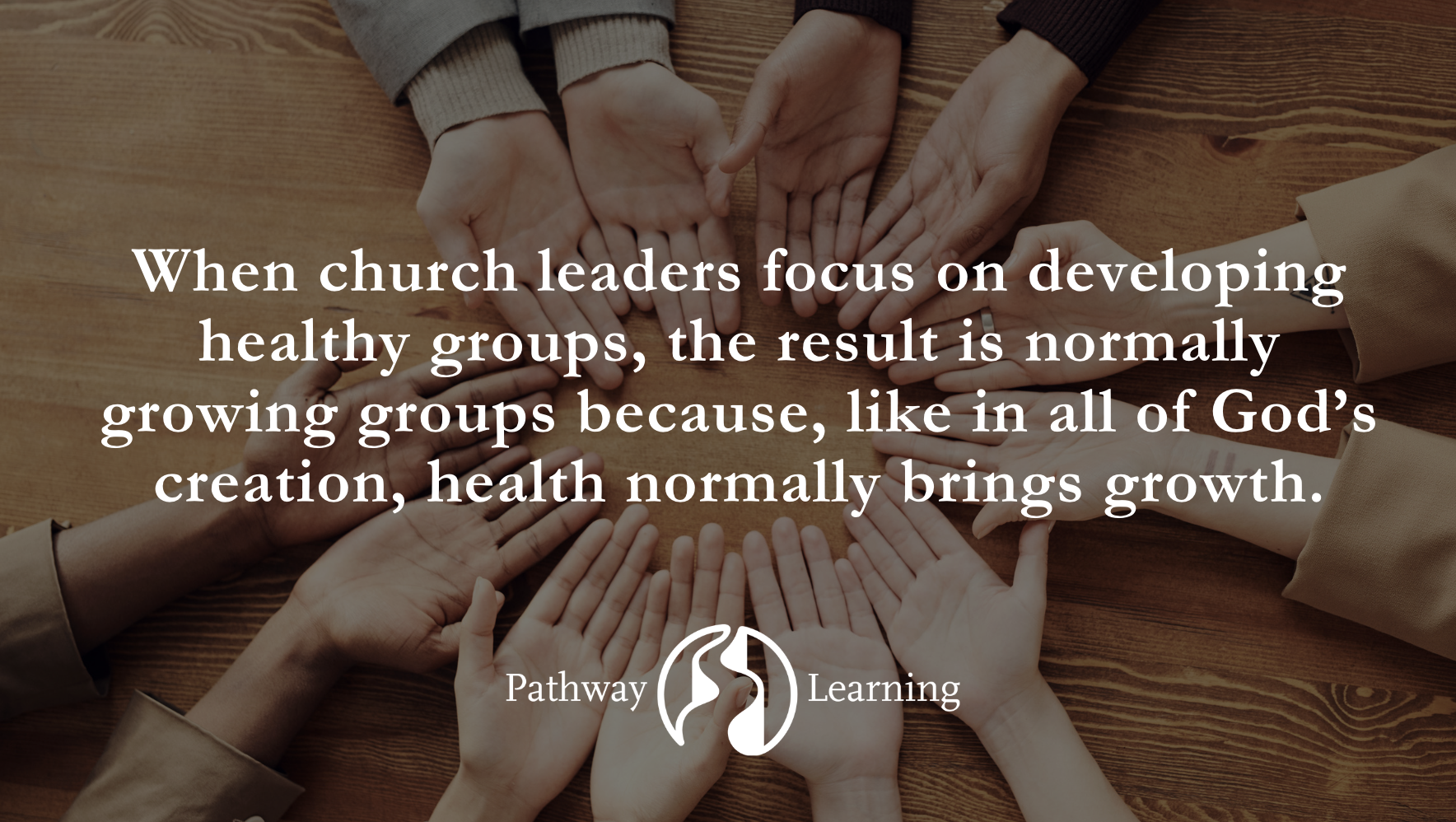Health in Community: Groups Series Part 4
By Dr. Steven L. Childers
Want to go deeper?
In this book you'll be equipped from Scripture with the principles and practices needed to help you develop biblical, God-honoring community groups. You’ll learn how to:
Follow Scripture's vision for a new community of redeemed humanity (Chapter 1)
Explain God's purpose to nurture his people through community (Chapter 2)
Demonstrate how the church builds itself up in love (Chapter 3)
Diagnose and lead healthy community groups (Chapter 4)
Determine what are the core commitments for community groups (Chapter 5)
Raise, nurture, and teach leaders in your community (Chapter 6)
Preview the Book
Transcript
Introduction
Just as the health of a human body is determined by the health of its cells, so the health of a church body is determined by the health of its groups.
This is why the focus of church group leaders shouldn’t be on the numerical growth of their group, but on its health. When leaders focus on developing a healthy group, the result is normally a growing group. This is because, like in all of God’s creation, health normally brings growth.
So, what does a healthy group look like?
Healthy groups are marked by several elements we find in the book of Acts which describe the first-century gathering of Christians. These elements include:
Worship: They were praising God (2:47)
Learning: They were devoted to the Apostles’ teaching (2:42)
Fellowship: They were devoted to the fellowship (2:42)
Prayer: They were devoted to the prayers (2:42)
Evangelism: Those who were being saved were added (2:47)
Mercy: They distributed proceeds to any who had need (2:45)
Missions: They laid their hands on them and sent them off (13:3)
Of course, all of these elements were not present with equal emphasis at every gathering of these first century Christians. But it’s clear that, over time, these gatherings consistently included every element.
Healthy Care Groups
The most essential small group in a church is called a care group. Care groups are sometimes called primary care groups because they provide the primary spiritual health care for group members.
Later we’ll examine a different kind of group, called a task group, which is more narrowly focused on the task of only one or two of these elements, such as learning, prayer or evangelism.
However, care groups strive to provide a more balanced emphasis on all the elements necessary for developing healthy members including worship, prayer, learning, fellowship, evangelism, mercy, and missions.
Again this doesn’t mean that care groups emphasize all these elements equally. Some healthy care groups may emphasize certain elements over others. But they always strive to include all the elements necessary for developing spiritually mature group members.
Unhealthy Care Groups
There’s a big difference between a care group’s healthy emphasis on certain elements and a care group’s unhealthy imbalance resulting in the neglect of elements needed for the spiritual growth of group members.
There are two common mistakes care groups make that result in unhealthy groups and members: 1) neglecting outreach and 2) neglecting nurture.
Outreach has an outward focus and normally include evangelism, mercy, and missions. Nurture has a more inward focus and includes worship, learning, fellowship, and prayer.
Neglecting Outreach Elements
A common mistake care groups make is to focus on nurture to the neglect of outreach.
These groups meet together regularly for times of prayer, Bible study, and mutual support and care. But they have little or no focus on reaching their lost neighbors, serving the poor in their community, and supporting the cause of world missions.
They may learn a lot about the Bible, but they often fail to apply that knowledge to their lives in a way that makes a difference in any lives but their own.
Their inordinate inward focus places them at high risk of becoming spiritually stagnant.
Neglecting Nurture Elements
Another common mistake care groups make is to focus on outreach to the neglect of nurture.
These groups are devoted to recruiting, equipping, and mobilizing their members to do all kinds of ministries both inside and outside the church body. Their primary focus is on reaching the lost, caring for the poor in their community, and advancing the cause of world missions.
But they have little or no emphasis on nourishing and caring for their group members so they will mature in Christ. This inordinate focus places them at risk of spiritual burnout.
Task Groups
Unlike primary care groups, task groups intentionally focus on only one or two elements.
Examples include groups dedicated entirely to prayer or in-depth study of the bible and theology or addiction recovery or evangelism or homeless ministry or missions.
The value of these groups is seen when a member of a primary care group needs or wants a greater focus on one or two elements when the primary care group is unable to do so. Examples include a group member who wants a greater focus on prayer, evangelism, ministry to the poor, or world missions.
These task groups can be healthy and helpful as long as they don’t become substitutes for primary care groups. To help avoid this danger, ministry task group leaders should encourage all their members to also be in a primary care group.
Conclusion
A healthy group is marked by all the biblical elements of both nurture and outreach including worship, prayer, learning, fellowship, evangelism, mercy, and missions.
There may be a healthy emphasis on either nurture or outreach elements but not an unhealthy imbalance that results in the neglect of any element.
In contrast, unhealthy groups focus on nurture elements to the neglect of outreach elements, or focus on outreach elements to the neglect of nurture.
The end goal of care groups and task groups is to work together in harmony to help every member grow to deeper levels of maturity in Christ.
We help underserved church leaders develop churches that transform lives and communities



